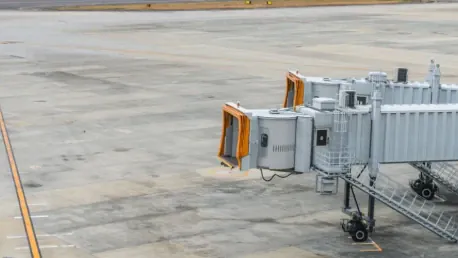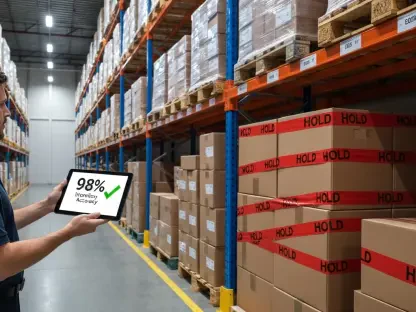In today’s fast-paced aviation industry, the efficiency and safety of aircraft operations are critical. One innovative solution that has gained traction in recent years is the automated aircraft docking system. These systems promise to enhance safety and streamline the process of guiding aircraft to their gates, but how reliable and effective are they? This article delves into the safety and efficiency of automated aircraft docking systems, exploring the various processes and technologies involved.
1. Automated preparation of the Safedock
Automated aircraft docking systems start with the automated preparation of the Safedock. This process involves setting up the Safedock for the expected aircraft, ensuring that everything is ready for a smooth docking procedure. The SafeControl Apron Management system plays a pivotal role in this stage by providing up-to-date flight information from the Airport Operational Database (AODB). This real-time data allows the system to anticipate the arrival of the aircraft and prepare accordingly.
The Safedock’s preparation includes checking for any potential issues that might hinder the docking process. Ensuring that the system is tailored for the specific aircraft type helps in avoiding any compatibility problems that could arise. This meticulous preparation significantly reduces the margin for error and enhances the overall safety of the docking process. By automating these initial steps, airports can manage their apron operations more efficiently, leading to faster turnaround times and improved on-time performance for flights.
2. Gate preparation
The next critical step in the automated docking process is gate preparation. This involves verifying that the assigned aircraft is compatible with the designated gate. The system checks not only the gate assigned to the arriving aircraft but also the neighboring gates and equipment. This comprehensive verification ensures that there will be no interference or safety risks when the aircraft is being guided to its parking position.
In addition to checking compatibility, the system also ensures that the passenger boarding bridge (PBB) is in a safe position. This step is crucial as any misalignment can lead to delays and potential safety hazards for passengers disembarking from the aircraft. By automating gate preparation, airports can streamline the process and ensure a high level of safety and efficiency. The combination of these detailed checks and real-time data integration helps create a seamless docking experience for arriving aircraft.
3. Checking GSE availability
Ground Support Equipment (GSE) availability is another vital checkpoint in the automated docking procedure. The SafeControl Apron Management system is responsible for checking if all the integrated equipment, such as the passenger boarding bridge (PBB), ground power unit (GPU), and pre-conditioned air (PCA) units, are ready for use. This ensures that all necessary equipment is available and in position before the aircraft reaches the gate.
If any of the systems, including PBB, GPU, or PCA, are not ready, the system immediately indicates this issue. This real-time reporting allows ground personnel to quickly address and rectify any equipment-related problems, thus minimizing potential delays. By automating the checking of GSE availability, airports can improve their operational efficiency and reduce the likelihood of human error, ultimately leading to safer and more reliable aircraft docking procedures.
4. Automatic initiation of docking procedure
Once all the preparatory steps have been completed, the SafeControl Apron Management system automatically initiates the docking process. This automatic initiation ensures that the docking procedure begins promptly and follows a standardized protocol, reducing the possibility of errors. The system also allows for manual activation, either locally via the operator panel or remotely through a Human-Machine Interface (HMI), providing flexibility for ground personnel to intervene if necessary.
The automatic initiation of the docking procedure is a significant advancement in airport operations. It not only speeds up the process but also ensures consistency in docking practices. By leveraging automation, airports can reduce the reliance on human intervention, thereby lowering the risk of errors and enhancing safety. This step is particularly beneficial in busy airports where the efficient management of arriving aircraft is essential to maintaining smooth operations.
5. Apron scan (available with Safedock X and T1 models)
The apron scan is a crucial feature available with the Safedock X and T1 models. This system scans the apron to ensure that there are no obstacles or vehicles in the path of the arriving aircraft. Using advanced visual docking guidance systems (A-VDGS), the apron scan provides a comprehensive assessment of the apron area, identifying any potential hazards that could interfere with the docking process.
The system’s ability to scan the apron in real time enhances safety by preventing collisions and other incidents caused by obstacles on the ground. By integrating this technology, airports can improve the accuracy and reliability of their docking procedures. The apron scan is particularly useful in adverse weather conditions, where visibility might be limited, ensuring that the arriving aircraft can be guided safely to its designated position without any issues.
6. The position of PBB
Ensuring the correct position of the Passenger Boarding Bridge (PBB) is another critical aspect of the automated docking process. The Safedock A-VDGS verifies the position of the PBB, ensuring it is safely aligned for the arriving aircraft. If the position cannot be verified, the system provides a specific indication, prompting ground personnel to take corrective action.
This verification process is vital for maintaining a high level of safety during the docking procedure. Misaligned boarding bridges can pose significant risks to passengers and crew, and addressing these issues promptly is essential. By automating this step, airports can reduce the risk of accidents and ensure a smooth and efficient docking process. The ability to verify the PBB position in real time contributes to the overall reliability of the automated docking system.
7. Aircraft type check
The aircraft type check is a crucial step in ensuring the safe docking of the arriving aircraft. The Safedock A-VDGS uses a 3D laser scanning technique to measure the arriving aircraft and verify its type and size. This precise measurement allows the system to confirm the aircraft’s compatibility with the gate and docking equipment, preventing any potential issues that might arise from mismatched dimensions.
By conducting a thorough aircraft type check, the system ensures that the docking procedure is tailored to the specific requirements of the arriving aircraft. This step enhances safety by minimizing the risk of errors and ensuring that the aircraft can be guided to its position without any complications. The use of advanced laser scanning technology in this process highlights the sophistication and reliability of automated docking systems, making them a valuable asset in modern airport operations.
8. Aircraft parking
Guiding the aircraft to its correct parking position is one of the final steps in the automated docking process. The Safedock A-VDGS provides active guidance to pilots, using intuitive signals displayed through high-intensity LED displays. These signals help pilots navigate the aircraft to its designated position with precision and ease, ensuring a smooth and safe docking process.
The system’s ability to provide clear and accurate guidance is crucial, particularly in busy airports where precise parking is essential to maintaining efficient operations. By automating this aspect of the docking process, airports can reduce the risk of human error and enhance overall safety. The use of high-tech visual guidance systems allows for seamless communication between the ground system and the aircraft, ensuring that the docking procedure is carried out with utmost accuracy.
9. Stop position
The determination of the accurate stop position is a critical component of the automated docking process. The system offers a wide range of aircraft stop positions, ensuring flexibility and accommodating various aircraft types. This capability is particularly important as it future-proofs the docking system for new and emerging aircraft types, maintaining compatibility and safety across different models.
By providing a precise stop position, the automated docking system enhances operational efficiency and safety. Pilots and ground personnel can rely on the system’s accuracy to ensure that the aircraft stops at the correct position, facilitating smooth passenger boarding and deboarding processes. This step also minimizes the risk of collisions or misalignments, contributing to a safer and more efficient airport environment.
10. Capturing on-block time
In the rapidly evolving aviation sector, the efficiency and safety of aircraft operations are paramount. A cutting-edge solution that has garnered significant attention in recent years is the automated aircraft docking system. These systems aim to bolster safety measures while simplifying the process of guiding airplanes to their designated gates. However, questions about their reliability and effectiveness remain. This article investigates the safety and efficiency of these automated systems, breaking down the various processes and technologies that make them work.
Automated aircraft docking systems utilize advanced sensors, cameras, and software to assist pilots in precisely aligning and parking their aircraft. These technologies help eliminate human error, reduce the chances of accidents, and improve overall operational efficiency. By automating the docking process, these systems not only ensure that aircraft are correctly positioned at the gate, but also expedite turnaround times, allowing for a quicker and more seamless transfer of passengers and baggage.
The adoption of automated docking systems also meets increasing operational and safety standards set by aviation authorities worldwide. These systems offer a dependable method for navigating the intricate environment of modern airports, addressing both safety concerns and logistical challenges. With the continued improvement and implementation of such technologies, the aviation industry can anticipate a future where aircraft docking is safer, more efficient, and highly reliable.









